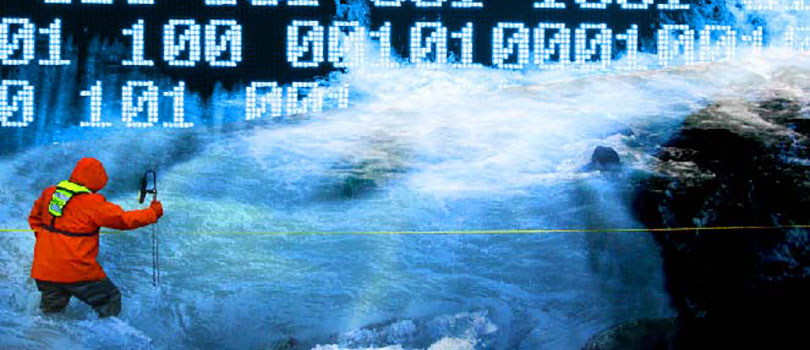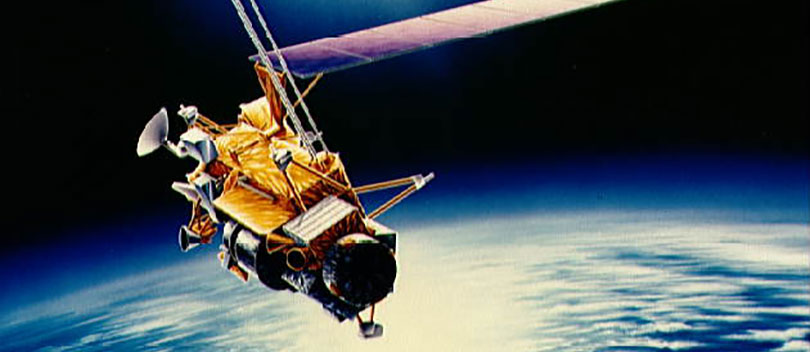
When Experience Matters: Stream Gauging at the Limits of Technology
The Alberta Irrigation Technology Site used for the NASH Q competition. Photo credit: Gerald Ontkean.
The North American Stream Hydrographers (NASH) hosted a Q competition at the Alberta Irrigation Technology Center (AITC) in Lethbridge, Alberta on June 8th. However, this wasn’t a typical flow regatta.
The intent of many flow regattas is to control as many variables as possible to make for a fair inter-comparison of results for a given technology (e.g. ADCP), which leads to the selection of sites and conditions that are nearly ideal for the technology being evaluated. A naïve interpretation of such results would lead to the conclusion that discharge measurements have better accuracy and repeatability than might be experienced in real-world conditions.
Most of what we know about quantification of measurement uncertainty is based on the potential for instrument errors, neglecting the relatively unquantifiable influence of hydrographer experience. An inexperienced hydrographer is likely to just accept measurement results without question, whereas an experienced hydrographer will ensure that the results make sense. Hence, it is the experienced hydrographer who is most capable of being able to identify any egregious instrument, sampling, or assumption errors while in the field, where there is still an opportunity to investigate and remedy any problems.
For this event, we made everyone start with an estimate of the flow without the use of any instruments. Each participant also had to assign an estimate of uncertainty to their Scientific Wild-Ass Guess (SWAG). There were as many different methods of guessing the flow as there were hydrographers. As you might expect, the quality of the flow estimates seemed to be related to years of field experience.
This exercise was very helpful when we started doing instrumented measurements.
With flows of 1.45 l/s and later at 61.5 l/s, we were dealing with either depths, widths or velocities that were too small for most conventional measurement methods. The reference flows, measured with AITC in-pipe mag meters, were unknown to the hydrographers. All they had to go by was their SWAG and their instruments. The instrument measurement results were, initially, all over the place. However, faced with a big gap between their SWAG and their instrument results, the hydrographers set about the task of changing their procedures to get results that made “sense.”
As an example, the “best” location for a conventional measurement was about 3 meters wide and about 0.3 meters deep. However, with a flow of only 1.45 l/s, there was almost no velocity at this section, and so the measured discharge over-estimated flow by 249%, but had a computed ISO uncertainty of only 27%! A more experienced hydrographer decided to use rocks to constrain the channel to a width of 0.2 m and take just one mid-channel velocity measurement, yielding a result that was within 3% of the reference flow.
As difficult as it was to measure small volumes of flow at this location, it can be even worse in natural channels clogged with weeds and debris.
It took time and a considerable amount of creativity and experimentation, but for each of the technologies used – acoustic velocity meter (AVM), salt dilution and Large-Scale Particle Image Velocimetry (LSPIV) – accurate measurements were eventually obtained at both levels of flow.
Thanks to generous sponsorship and support from Geo-Scientific, AITC, and Hoskin/SonTek, it was a very good day in the southern Alberta sunshine. The barbecue and beverages resulted in excellent knowledge sharing amongst hydrographers coming from a wide range of expertise and experience, and working with a diverse set of technologies and methods. Prizes were given for the measurements closest to the reference flow with the lowest estimated uncertainty – i.e. to win, you had to not only be accurate in your result, you had to also be confident in your technique, technology and method.
If you missed this opportunity, you may be interested to know that we have already started preliminary planning for a similar event at the 2018 CWRA conference, which will be in Victoria, BC. The theme for next year’s event will be on new and alternative methods for flow measurement.


